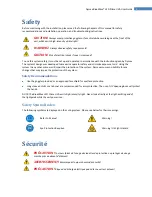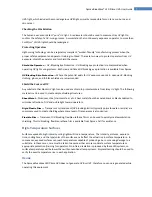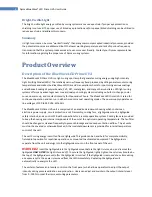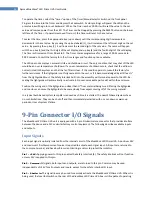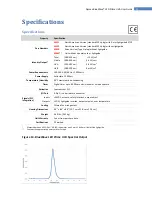
6
Dymax BlueWave® LED Prime UVA User Guide
L’équipment ètre concu pour ètre utilisé correctement constituer, avec composants brancher correct
ement,
et marché en conformément avec instructions important. Le plan étais developer pour render au maxime
opérateur sécurité et minimiser expositon à ultraviolette.
Recommander de Sécurité
■
Emploi lunettes, ou un protéger de visage pour protection de ultraviolet pour protéger vous oeux.
■
Chemises à manche long, ou manteau de labo, sont recommander pour protéger les bras, et utilisation de
ultraviolette gants opague vais protéger les mains.
REMARQUER: A
vec le filtre intérieur installé, l’Onde Bleu émettre
lumière. Ne jamais regardez directement à la
source de lumière pendant que l’élément est en opération.
Dymax UV Light-Curing System Safety Considerations
Dymax light-curing technology has been used successfully for over 30 years. The fast cure, one-component
nature of our curing technology has made it the process of choice for many manufacturers requiring a “Cure
on Demand” assembly process. There are four common questions/concerns related to light
-curing systems:
UV exposure, high-temperature surfaces, ozone, and bright, visible light.
NOTE: The energy emitted from the Dymax BlueWave LED Prime UVA spot-curing system is in the upper end of
the UV portion of the spectrum. To ensure that all safety aspects regarding operations of this equipment are
addressed, please review and follow information and safety information listed below.
UV Exposure
Figure 1. UV Spectrum
Standard Dymax UV-curing systems have been designed to primarily emit UVA light (as shown in Figure 1).
UVA light is generally considered the safest of the three UV ranges: UVA, UVB, and UVC. Although OSHA does
not currently regulate ultraviolet-light exposure in the workplace, the American Conference of Governmental
Industrial Hygienists (ACGIH) does recommend Threshold Limit Values (TLV
’
s) for ultraviolet light. The strictest
interpretation of the TLV (over the UVA range) for workers’ eyes and skin is 1 mW/cm
2
(intensity), continuous
exposure. Unless workers are placing bare hands into the curing area, it is unusual to exceed these limits. To
put the 1 mW/cm
2
limit into perspective, cloudless summer days in Connecticut regularly exceed 3 mW/cm
2
of





